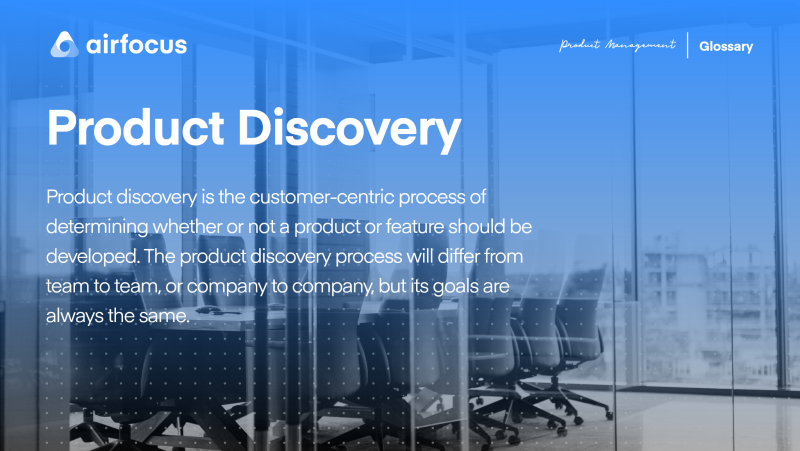Product Discovery
What is Product Discovery
Definition of Product Discovery
Product discovery is the customer-centric process of determining whether or not a product or feature should be developed. The product discovery process will differ from team to team, or company to company, but its goals are always the same.
In a nutshell, product discovery aims to:
Reveal and document the problems customers are currently facing (typically through customer interviews or surveying)
Paint an empathetic picture of a typical customer by inviting cross-team input
Give plenty of airtime to the customer’s problems and needs — our tendency is to rush to a solution, but the more time spent understanding the problem, the more effective your solutions will be
Collect and collate feedback on customer problems from as wide a selection of channels as possible (interviews, social media polling, etc.)
Explore whether what you think you know about the customer is correct
Ultimately identify which products and/or features will be most useful in meeting customer needs — these are the ones you prioritize in development
What are the benefits of product discovery?
At the most fundamental level, product discovery reveals the exact problems your prospective customer is facing. From here, a product team can begin to think about solutions to those problems and how they might be solved. After that, it’s a matter of the product owner documenting these solutions and starting the development process in earnest.
In short: product discovery helps you build better products.
But product discovery also delivers a cultural benefit — one that comes from meaningful customer interaction. When a product team interacts directly with the person who will be using the platform or app they build, every line of code they write or icon they design is suddenly put into context.
The product roadmap becomes less of a to-do list and more of a blueprint for solving the problems they saw and heard during product discovery. This level of investment in a product inevitably translates to higher quality output, with empathetic, customer-centric design at its heart.
Is product discovery used only with new products?
Put simply: no.
While product discovery is most often used in the preliminary development stages of a new build, there’s no reason it can’t also be used with existing products.
Customer insight can be used during backlog grooming sessions to inform future product updates and adjust the trajectory of the product as it grows — ensuring it aligns with customer needs.
Carrying out product discovery with an existing product doesn’t need to be complex. It can be as simple as posting a survey on social media, or just picking up the phone.
Who should be involved in product discovery?
Product discovery should be a collaborative effort. After all, the learnings and insights that arise from this process will be valuable for the whole team.
When arranging a product discovery session, you might consider including:
The product owner, who is responsible for the long-term product roadmap and steering of the overall project
Specific product managers and designers who will help manage the products and/or features born from product discovery
Important stakeholders from other areas of the business (sales, marketing, etc.)
Product discovery will get everyone working from the same page; they’ll have seen how customers articulate their problems and will have a renewed sense of empathy for the user.
This empathy can be translated into engagement, inspiration, and dedication to building the most effective product possible.

General FAQ

Glossary categories
Create effective product strategy

Experience the new way of doing product management








